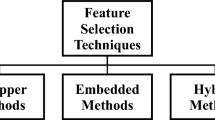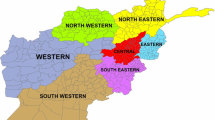Abstract
Perth Airport is a major airport along the southwest coast of Australia. Even though, on average, fog only occurs about twelve times a year, the lack of suitable alternate aerodromes nearby for diversion makes fog forecasts for Perth Airport very important to long-haul international flights. Fog is most likely to form in the cool season between April and October. This study developed an objective fuzzy logic fog forecasting model for Perth Airport for the cool season. The fuzzy logic fog model was based on outputs from a high-resolution operational NWP model called LAPS125 that ran twice daily at 00 and 12 UTC, but fuzzy logic was employed to deal with the inaccuracy of NWP prediction and uncertainties associated with relationships between fog predictors and fog occurrence. The outcome of the fuzzy logic fog model is in one of the four categories from low to high fog risk as FM0, FM5, FM15 or FM30, intended to map to approximate fog probability of 0, 5, 15 and 30%, respectively. The model was found useful in its 5 year performance in the cool seasons between 2004 and 2008 and required little recalibration if mist was treated as if it were also a fog event in the skill evaluation. To generate an operational fog forecast for Perth Airport, the outcome of the fuzzy logic fog model was averaged with the outcomes of two other fog forecasting methods using a simple consensus approach. Fog forecast so generated is known as the operational consensus forecast. Skill assessment using frequency distribution diagram, Hansen and Kuiper skill score, and Relative Operating Characteristic curve showed that the operational consensus forecast outperformed all three individual methods. Out of the three methods, the fuzzy logic fog model ranked second. It performed better than the other objective method called GASM but worse than the subjective method which relied on forecaster’s subjective assessment. The skills of the fuzzy logic fog model can be further improved with the tuning of fuzzy functions. In addition, similar models can be customised for other airports. The study also suggested the use of the simple consensus approach to enhance forecasting skills for other stations or weather phenomena if there were two or more independent forecasting methods available.






Similar content being viewed by others
References
Bardossy, A. and Duckstein, L. (1995), Fuzzy rule-based classification of atmospheric circulation patterns, International Journal of Climatology 15, 1087–1097.
Bergot, T. and Guedalia, D. (1994), Numerical forecasting of radiation fog Part I: Numerical model and sensitivity tests, Mon. Wea. Rev. 122, 1218–1230.
Bergot, T., Terradellas, E., Cuxart, J., Mira, A., Liechti, O., Mueller, M., and Nielsen, N. W. (2007), Intercomparison of single-column numerical models for the prediction of radiation fog, J. Appl. Meteorol. Climatol. 46, 504–521.
Bott, A., Sievers, U. and Zdunkowski, W. (1990), A radiation fog model with a detailed treatment of the interaction between radiative transfer and fog microphysics, J. Atmos. Sci. 47, 2153–2166.
Clark, P. A. and Hopwood, W. P. (2001), One-dimensional site-specific forecasting of radiation fog Part I, Model formulation and idealized sensitivity studies, Meteorological Applications 8, 279–286.
Clark, P.A., Harcourt, S. A., Macpherson, B., Mathison, C. T., Cusack, S. and Naylor, M. (2008), Prediction of visibility and aerosol within the operational Met Office Unified Model Part I: Model formulation and variational assimilation, Q. J. R. Meteorol. Soc. 134, 1801–1816.
Dahni, R. R. and Stern, H. (1995), The development of a generalised UNIX version of the Victoria Office’s operational analogue statistics model, BMRC Research Report No. 47, pp 34.
Engel, C. and Ebert, E. (2007), Performance of hourly operational consensus forecasts (OCFs) in the Australian region, Weather and Forecasting 22, 1345–1359.
Golding, B. W. (1993), A study of the influence of terrain on fog development, Mon. Wea. Rev. 121, 2519–2541.
Gultepe, I., Tardif, R., Michaelides, S. C., Cermak, J., Bott, A., Bendix, J., Muller, M. D., Pagowski, M., Hansen, B., Ellrod, G., Jacobs, W., Toth, G. and Cober, S. G. (2007), Fog research: a review of past achievements and future perspectives, J. Pure Appl. Geophys. 64, 1121–1159.
Hansen, B. (2007), A fuzzy logic-based analog forecasting system for ceiling and visibility, Weather and Forecasting 22, 1319–1330.
Mason, I. (1982), A model for assessment of weather forecasts, Aust. Met. Mag. 30, 291–303.
Murtha, J. (1995), Application of fuzzy logic in operational meteorology, Scientific Services and Professional Development Newsletter, Canadian Forces Weather Service, 42–54. http://chebucto.ca/Science/AIMET/archive/murtha.pdf.
Murphy, A.H. and Winkler, R.L. (1987), A general framework for forecast verification, Mon. Wea. Rev. 115, 1330–1338.
Puri, K., Dietachmayer, G., Mills, G.A., Davidson, N.E., Bowen, R.A., and Logan, L.W. (1998), The new BMRC Limited Area Prediction System, LAPS, Australian Meteorological Magazine Vol 47, No 3, 203–223.
Regano, L. (1997), A fully automated forecasting aid for fog in Australia, Meteorological note 212, Bureau of Meteorology, Australia.
Thompson, P. D. (1977), How to improve accuracy by combining independent forecasts, Mon. Wea. Rev. 105, 228–229.
WMO (1995), WMO No. 306, Manual on Codes, International Codes, Volume I.1, Part A, Alphanumeric Codes.
Woodcock, F. (1976), The evaluation of yes/no forecasts for scientific and administrative purposes, Mon. Wea. Rev., 104, 1209–1214.
Woodcock, F. and Engel, C. (2005), Operational consensus forecasts, Weather and Forecasting, 20, 101–111.
Zadeh, L. A. (1965), Fuzzy sets, Information and Control 8, 338–353.
Zadeh, L. A. (1999), From computing with numbers to computing with words—from manipulation of measurements to manipulation of perceptions, IEEE Transactions On Circuits and Systems—I: Fundamental Theory and Applications, 45, 105–119.
Zhou, B., Dimego, G., and Gultepe, I. (2010), Forecast of low visibility and fog from NCEP—current status and efforts, proceeding of the 5th International Conference on Fog, Fog Collection and Dew, 25–30 July 2010, pp 105–108, available at the web link of http://meetingorganizer.copernicus.org/FOGDEW2010/FOGDEW2010-57-8.pdf.
Acknowledgments
The authors wish to thank Frank Woodcock, Grahame Reader and Philip Riley for their constructive comments and suggestions during the internal review process at BoM. The authors also thank all WARFC forecasters for the wisdom and contribution to the operational consensus forecast. Thanks also go to an anonymous reviewer who made valuable suggestions and helped to improve the quality of the paper.
Author information
Authors and Affiliations
Corresponding author
Rights and permissions
About this article
Cite this article
Miao, Y., Potts, R., Huang, X. et al. A Fuzzy Logic Fog Forecasting Model for Perth Airport. Pure Appl. Geophys. 169, 1107–1119 (2012). https://doi.org/10.1007/s00024-011-0351-x
Received:
Revised:
Accepted:
Published:
Issue Date:
DOI: https://doi.org/10.1007/s00024-011-0351-x




